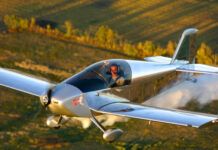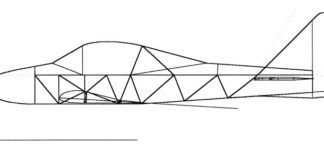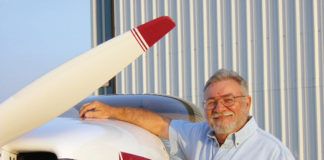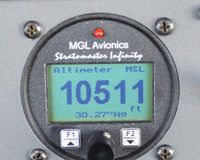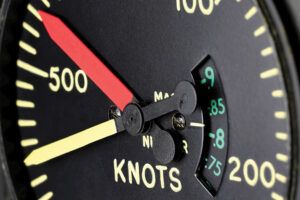
For better or worse, pilots can be an analytical bunch. Not all of them, of course, since many are what you’d call seat-of-the-pants types who fly with casual abandon—the clinking you hear is the ball banging the ends of the slip-skid instrument—and are likely to buy or build an airplane based on the color of the rocker boxes, the rake of the wing strut or the feel of the stick grip.
But most aren’t like that. They gather reams of data before embarking on an expensive and commitment-noshing project like building an airplane. They pore over specifications, whether given by the manufacturer or offered as part of a flight review, and they’re likely as not to have dropped the data into a spreadsheet to compare one design to another. Let’s see, the Canardigan 400 is, on average, 7.2 knots slower than the Pugnose XCMZ, but it has, on average, 171 fpm better climb from sea level. Let’s see what kind of difference that makes on a 1000-mile trip—click, brow furrow, “Hmm.”
These shoppers are also likely to be collecting budget numbers as they go. Those who have built airplanes and recall these innocent days can feel free to release a world-weary guffaw because they know that even with the best raw data, very few airplanes come in “on budget.” That’s because the first time you build, you don’t know what you don’t know. You have little idea which tools you want yet or how to set up a workspace, and you definitely won’t have all your avionics picked out at the beginning of the journey. (OK, you might have, but it’s not very likely that’s what you’ll actually install.) Most builds end up costing more than forecast, but unless you’ve really missed your budgeting, it’s because the airplane has gained capability or performance, or both. Neither comes free.
Our Data, Not Our Data
Which brings me to the beast in the middle of this magazine: our annual buyer’s guide. (Out of habit and consistency, we call it a “directory,” but that always makes me think of the rain-damaged Yellow Pages someone left on my doorstep years after I’d gone full Google.) How we compile the data is less than glamorous: We spend several weeks gathering new data and updating what we have as best we can. Most of the major kit manufacturers are very clearly still in business, and the best of those have fairly comprehensive pricing and performance data available on their websites. Some we have to hound. A few ignore multiple entreaties and then submit way past the deadline and miss the issue—and are cranky.
The web is a sometimes useful tool. It’s not difficult to look at, say, Van’s Aircraft’s site and figure out what an RV-14 will cost to build. The basic airframe components are well documented and clearly priced. So are many of the big accessories, such as engine and propeller. There are always gaps in the completeness of kits from one make to another, as well as the documentation thereof. Does the kit come with wheels and brakes? Wheel fairings? Seat bases? Every design has some little black hole as hungry for your Visa card as the neighbor’s German Shepherd is for the mailman’s anklebone.
This is not universally true, and in a way, it pains me to have to provide only an “estimated build cost” field in the printed guide. The reasons are many but include the fact that there can be a big gap between a “base” kit and one with all the options, including quickbuild components. (You’ll see some of this in the MOAC story.) Plus, kit prices tend to change during the year—especially this year—so printing one in September doesn’t mean it’ll be useful a year from now.
The bottom end of the “built for” range is often comically low, with the justification that you could buy a used engine, rebuild it yourself, find a prop no one else is using, repurpose some radios and sew your own seat cushions. But some of these numbers are below the aggregate costs of even these items. I think a few of the older designs are just sticking with old assumptions—like you can get a new Lycoming O-320 for $15K (as if!)—and some really just haven’t put a sharp pencil to it. Some of them, especially the newcomers, are letting their enthusiasm for marketing overcome their better senses.
You can fix this by drilling down to the actual components of the kits and then start your own spreadsheet of what’s missing. Go to someplace like Aircraft Spruce (since they have, well, everything) and price out what’s missing. Add it all up. Now increase that number by at least 50%. You’ll be getting close.
Cooking the Performance Books
If it sounds like I’m suggesting you be extremely skeptical of manufacturer claims on costs, you’re catching on. The same applies to performance figures bandied about and even reprinted in this magazine. As with prices, most of the bigger, more successful companies have fairly accurate performance estimates. (What do they say? When you’re good, you don’t have to lie about it.) Plus, when a design has been successful, and there are many of a given configuration flying, the data pool is larger, and the owners tend to be more vocal. A company blatantly padding its performance numbers tends to get called out and, often quietly, revises them to better meet reality. Still, you have to watch for new owners saying they saw 200 knots the other day, not fully appreciating the difference between true airspeed and ground speed; thanks for the push, Mr. Tailwind.
When there are few examples in the field, it’s easier to hide the fabrications by blaming builders or citing configurations that are unlike the factory ship, which “really did 200 knots on 80 hp.” (The heck it did.) Be especially wary of new designs—triply so of new aircraft whose marketing art is a fancy CAD drawing—yet to fly. You can run simulations all day long, but with a few misjudged assumptions driving the data, you can get pretty much anything you want to print on the brochure. There’s a new six-seat piston twin on the market promising very high cruise speeds at very low fuel flows. Maybe it can achieve each of those lofty goals, but my gut says not at the same time. Our industry has a rich, colorful history of strategically “misplaced” static ports (to boost indicated speeds) and outright fabrication. There’s less of it than there used to be, but it’s still a thing.
I believe that some companies just don’t test accurately or thoroughly, and in some cases, have tried to extrapolate from prototype models that might differ from the final kit. Some, like Van’s Aircraft, are among those who do thoroughly and painstakingly test and document performance. I know because I’ve seen them do it.
My point is this: Treat published specs with great care. I offer that even the most updated versions we’re able to source and print here should be used for large, gross comparisons. As in orders of magnitude. The data simply aren’t reliable enough to be placed in a spreadsheet and used for true, micro-level comparisons. Once you’ve narrowed your choices, set out to learn what real builders spent to complete their projects (if they’ll tell you) and what kind of performance they see. After all, your completed airplane will take you on a journey of self-discovery (and, later, maybe a vacation or two), but it doesn’t do Excel.



